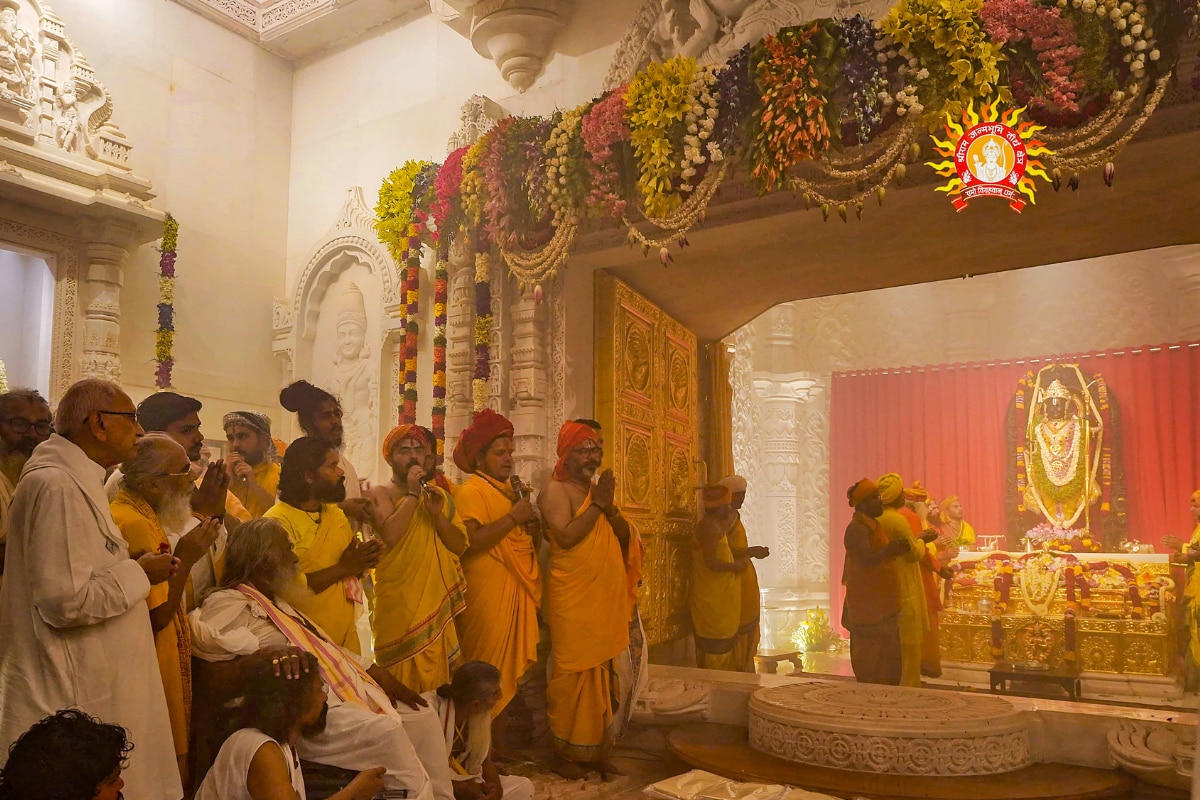
NEW YELLOW DRESS CODE FOR AYODHYA RAM MANDIR PRIESTS; SMARTPHONE BAN, 5-HOUR SHIFTS AMONG OTHER DOS AND DON'TS
Priests in Ayodhya’s Ram Temple would now be seen in a new attire following a change in the dress code. The Shri Ram Janmabhoomi Teerth Kshetra, which manages the temple, has introduced bright yellow-coloured safa (headgear), chabandi (kurta) and dhoti for the priests, replacing the traditional saffron robes.
Besides, the trust has also barred the priests from carrying smartphones inside the garbhagriha (sanctum sanctorum) and has redefined some other dos and don’ts for the priests.
Sources privy to the developments said the measures are part of an effort to maintain uniformity among the priests and make them distinct from others on the premises.
“A new dress code has been implemented for the priests at the Ram Temple. Now the priests, including the chief priest, four assistant priests and 20 trainee priests, will sport safa to be wrapped around the head, chaubandi (full-sleeve kurta) and dhoti, all in yellow colour,” said Santosh Kumar Tiwari, assistant priest at the Ram Temple.
Earlier, majority of the priests at the temple donned saffron attires. “Some of the priests used to come in yellow attires, but it was not mandatory,” added Tiwari.
He further said that as per the Sanatana Dharma, priests should be in clothes that are worn head and hands first and that the newly introduced dress code adheres to the same.
The trust has also imposed restrictions on priests carrying smartphones inside the garbhagriha. The trust has stated that the restrictions on carrying mobile phones have been imposed due to security reasons, but sources say the decision was taken following the water leakage controversy.
Water Seepage at Ram Temple
Recently, Acharya Saytendra Das, head priest of the Ram Mandir, pointed out that the recent monsoon showers had led to water leakage in the temple’s garbhagriha. “With the first rains, water leakage has started in the temple where Ram Lalla is seated and the areas near it. Water has collected inside. It must be found out what is lacking in the construction in the part of the temple already built. What is causing the water leakage?,” Das had said in a statement.
Nripendra Misra, the chairperson of the Ram Mandir’s management trust, carried out a spot inspection and stated that there was no flaw in the construction of the temple and stressed that there was no water accumulation in its sanctum sanctorum. He explained that rainwater traveled from the pipes that were fixed to install electric wires.
On June 26, the Ram Temple trust had stated that “not a single drop of water” had dripped from the roof of the sanctum sanctorum where the idol of Lord Ram was kept, nor has water entered the sanctum sanctorum from anywhere.
However, some pictures purportedly showing water leakage in the sanctum sanctorum had surfaced from inside the Ram Temple complex.
Other rules introduced include setting five-hour shifts for the priests. Sources said that as per the new dos and don’ts, the chief priest would be assisted by four assistant priests while each assistant priest would be assisted by five trainee priests whose shifts would start from 3:30pm and would last till 11pm.
2024-07-02T05:56:14Z dg43tfdfdgfd